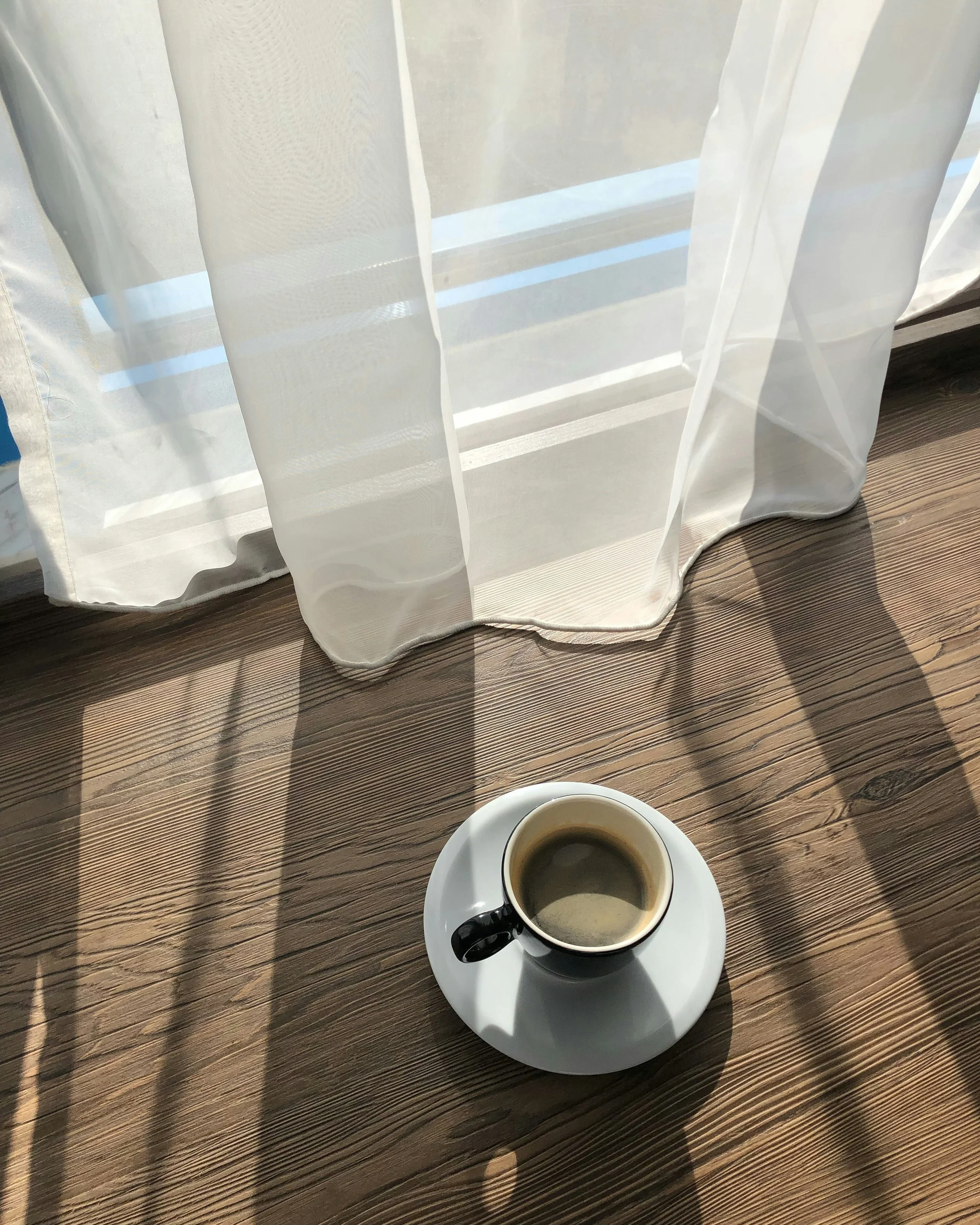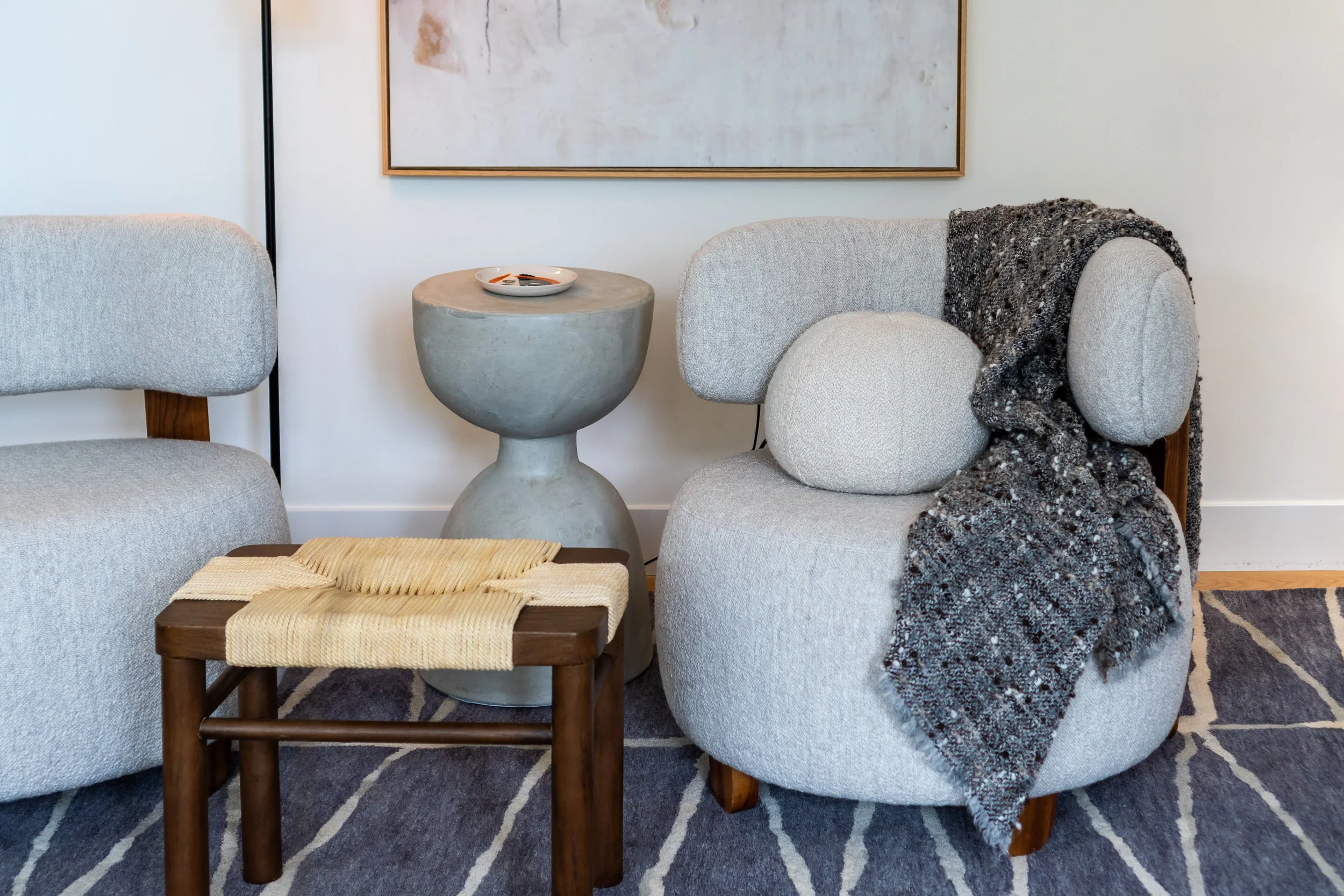Light, Mood, and the Shifting Season
As we transition into the colder months, the world around us changes and daylight becomes fleeting. With shorter days and longer nights, our homes take on an even greater role: they become sanctuaries that support our comfort and mental wellbeing. November reminds us that interiors are more than functional spaces, they are environments that can nurture us, guide our natural rhythms, and bring warmth and calm during the darker hours. Thoughtful use of light, paired with cozy textures and intentional spaces, allows our homes to respond to the season, enhancing both atmosphere and emotional balance.
The Changing Light of November
Natural light in late autumn hits different. The sun hangs lower, shadows stretch longer, and colors take on a gentler, more diffused tone. Textures appear deeper; wood grains, boucle, and brushed metals feel more tactile under softer light. Designing for this season means acknowledging that light is alive, it shifts hour by hour, reshaping how we perceive space.
Pay attention to where sunlight lands in your home now. That overly bright sunny corner you overlooked in summer might become the perfect spot to enjoy your morning coffee and relish in the warmth of the winter sun. More light may be entering your home, as the fallen leaves no longer block the sun, aiding to warm your space. Spaces that once felt open may now crave intimacy and glow. Let the evolving light guide subtle rearrangements. Now is the time to explore a different layout for seating, re-angling mirrors, or layer lighting in zones where the day lingers longest. This is the time to make your space work for you as daylight becomes fleeting and precious.
Light as a Design Element
Light defines atmosphere in our homes and the world outside. As natural light diminishes, intentional layering of light in our spaces becomes essential for thriving through the darker months. Think of how the lighting in your home can comfort you — how it can make long evenings feel cozy, grounded, and alive.
Lighting can be categorized into three layers: ambient, task, and accent. Each plays a distinct role, and together they shape how your home feels and functions.
Ambient Lighting
Ambient lighting includes your ceiling fixtures, sconces and lamps. It is the framework that creates the atmosphere of your home and the foundation upon which all other light is built.
Let’s discuss the dreaded “big light.” Ceiling lights get a bad reputation for being obtrusive or harsh, but during the colder months, they’re essential for maintaining a sense of warmth and balance at home.
Some things to consider to make your overhead light more inviting:
Install dimmer switches to control brightness and adjust mood.
Choose fixtures that diffuse the light and avoid fixtures with bare bulbs to reduce harshness.
Always opt for warm light bulbs in winter months. Cool-toned bulbs can feel stark and disrupt our evening rhythms.
Warm bulbs evoke the light of a fire or the soft edges of sunrise and sunset, while cooler bulbs mimic midday clarity which is great for focus but less so for cozy evenings. Color-changing smart bulbs can bridge the two, allowing you to adjust color temperature and brightness to align with the time of day. Just ensure your fixture and bulb are compatible before installing.
Other ambient lighting options include sconces and floor or table lamps. Again, prioritize control, fixtures with dimmers and warm bulbs make all the difference when crafting the foundation of light that suits both your space and your seasonal mood.
Task Lighting
Task lighting focuses on clarity where you need it most, especially when natural light has faded for the day. This could be at your desk, the kitchen counter, or your favorite reading chair. Task lighting can take many forms, but it’s most commonly found in lamps or under-cabinet fixtures.
Controllability is key. You want the light bright enough to illuminate what you’re doing, but still warm enough to feel comforting. Bright, cool-toned bulbs can work well for detail-oriented tasks since they enhance focus and color accuracy, but remember balance is key. Diffused shades, adjustable arms, and dimmable bulbs help keep the light from feeling stark or clinical.
To make task lighting cozy rather than utilitarian:
Choose fixtures with warm finishes (brass, linen, rattan, or matte ceramic) to soften the tone.
Use fabric or frosted glass shades to diffuse light and eliminate glare.
If your space allows, layer a small lamp near your task area with your ambient light instead of relying solely on one source — the mix will feel gentler and more natural.
Think of task lighting as functional warmth: enough clarity to stay productive, but never at the expense of calm.
Accent Lighting
Accent lighting includes all fixtures that provide interest and emotion, drawing the eye toward art, texture, or architectural details. It’s the layer that gives your home character and a sense of depth. Accent light turns ordinary corners into intimate moments through the soft glow on a textured wall, a small spotlight grazing artwork, or a candle’s flicker against stone or metal.
For the darker months, accent lighting can be your biggest ally in creating coziness. Consider:
Picture lights or wall washers to highlight artwork or texture, adding warmth and sophistication.
String lights, candles, or low-glow table lamps to create points of visual comfort in shadowy corners.
LED strip lights beneath shelves or cabinets for a subtle halo effect that adds depth without overwhelming.
Use accent lighting to build mood and rhythm throughout your home. The interplay of brightness and shadow, glow and dimness, mimics the natural shifts of daylight — a reminder that even in darker months, light still dances through our spaces.
As we layer light intentionally, we begin to notice how deeply it affects not just our spaces, but ourselves. The glow of a lamp at dusk, the warmth of a dimmed sconce, or the soft shimmer across a wall these aren’t just aesthetic choices. They shape how we feel, how we rest, and how we reconnect during the darker months. Light influences our rhythm, our focus, and even our sense of comfort. In many ways, designing with light is also designing for wellbeing.
Designing for Wellbeing
November invites us to pause, slow down, and create moments of comfort and reflection. Thoughtful lighting doesn’t just brighten a room, it enhances the textures, materials, and spaces that support our wellbeing during the darker months.
Consider how your home feels as daylight fades:
Textures and materials: Plush throws, layered rugs, soft cushions, and natural surfaces like wood, stone, or clay take on a richer, more tactile presence under carefully layered lighting. The soft glow of a sconce or lamp highlights these details, making everyday spaces feel warm and inviting.
Flexible, intentional spaces: Small retreats for reading, journaling, or quiet reflection come alive when lit thoughtfully. Adjustable task lighting allows these zones to function without overpowering the ambient mood, and accent lighting can subtly draw attention to favorite objects, artwork, or architectural features.
Visual and emotional rhythm: Just as daylight ebbs and flows, lighting can create a rhythm that guides the eye and the body through the home. Pools of glow and pockets of shadow enhance depth and intimacy, helping spaces feel alive rather than static.
Atmosphere for all senses: Sound, scent, and light work together. A softly lit corner with a candle, a favorite chair, or textured throw invites relaxation. Even subtle lighting changes can highlight these elements, making them feel intentional and mood-enhancing.
By layering light to complement these sensory and functional elements, your home doesn’t just respond to shorter days, it actively supports comfort, reflection, and emotional wellbeing. Thoughtful lighting allows the beauty of your space to shine while creating an environment that feels safe, calm, and restorative during the long evenings of November.
Conclusion: Designing for Mindful Winter Living
As the days shorten and winter approaches, our homes become more than places to live — they are spaces that can actively support our mental and emotional wellbeing. Thoughtful lighting remains central: it not only illuminates, but enhances the textures, corners, and details that make a home feel comforting, alive, and nurturing.
By layering ambient, task, and accent lighting, you create spaces that adapt to your rhythm and mood. Warm glows highlight cozy textiles, accentuate natural materials, and illuminate small retreats for reading, reflection, or connection. Shadows, soft pools of light, and visual rhythm invite calm and contemplation, while brighter task lighting ensures functionality without overwhelming the atmosphere.
Designing for wellbeing in November is about intentionality. Arranging light, materials, and furnishings to respond to the season’s natural shifts. It’s about creating moments that restore energy, soothe the mind, and transform even the shortest days into experiences of comfort and balance.
When your interiors are designed with this mindfulness, your home doesn’t just shelter you from winter. It supports, uplifts, and restores you, helping you navigate the darker months with clarity, warmth, and calm.
True design supports the fabric of our lives. It’s how our homes support our wellbeing, comfort, and daily rhythm. Thoughtful interiors nurture the body and the mind, spanning all seasons and phases of our lives. That’s just good design. That’s Kali-Lu Interiors.






